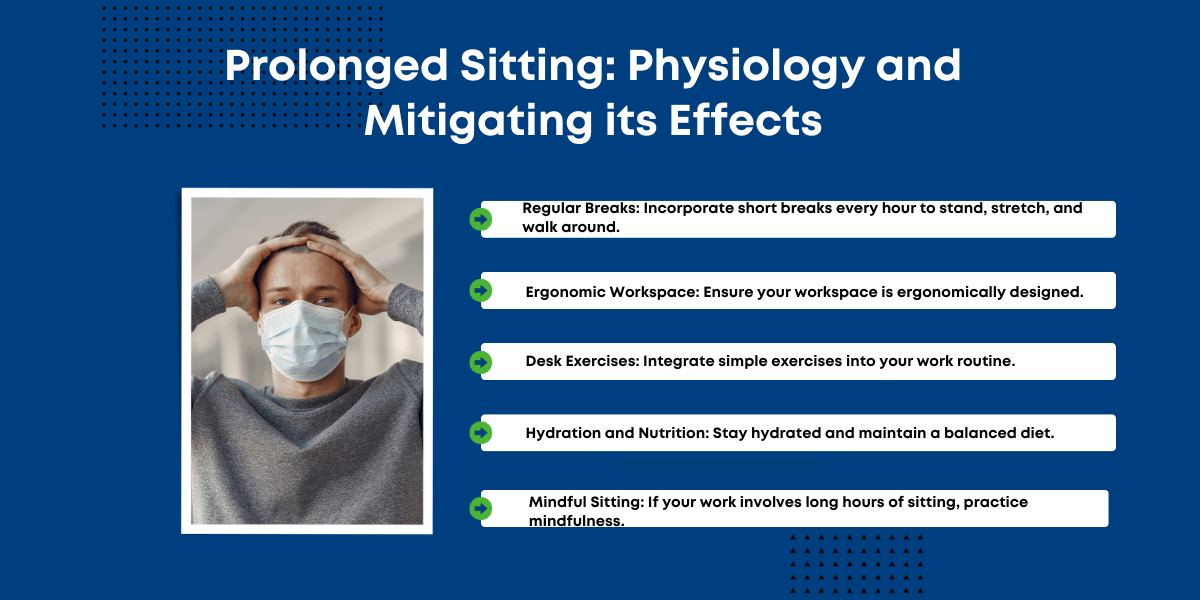Prolonged Sitting: Physiology and Mitigating its Effects
Prolonged Sitting: Understanding the Physiology and Prevention Strategies
Prolonged Sitting: Physiology and Mitigating its Effects
In the modern world, where technology has made our lives more convenient, one detrimental side effect has emerged: prolonged sitting. Whether it’s at the office, during commute, or binge-watching our favorite shows, we spend a significant portion of our day sitting. However, this seemingly harmless activity can have profound effects on our physiology and overall health. In this blog post, we will delve into the physiology of prolonged sitting and explore effective ways to mitigate its negative impact on our well-being.

The Physiology of Prolonged Sitting
When we sit for extended periods, our bodies undergo various physiological changes. Muscle activity decreases, leading to a slower metabolism and reduced calorie burning. Blood circulation slows down, causing muscles to receive less oxygen and nutrients, leading to stiffness and discomfort. Over time, prolonged sitting can contribute to weight gain, muscle atrophy, and increased risk of chronic diseases such as obesity, diabetes, and cardiovascular problems.
Mitigating the Effects of Prolonged Sitting
- Regular Breaks: Incorporate short breaks every hour to stand, stretch, and walk around. Set a timer to remind yourself to move, even if it’s just for a few minutes.
- Ergonomic Workspace: Ensure your workspace is ergonomically designed. Use an adjustable chair and desk to maintain proper posture, reducing strain on your back and neck.
- Desk Exercises: Integrate simple exercises into your work routine. Shoulder rolls, seated leg lifts, and torso twists can be done discreetly and help improve blood circulation.
- Active Commuting: If possible, choose active modes of commuting like walking or cycling. This not only reduces sitting time but also adds physical activity to your day.
- Regular Exercise: Engage in regular physical activity outside of working hours. Aim for at least 150 minutes of moderate-intensity exercise per week to counter the effects of prolonged sitting.
- Hydration and Nutrition: Stay hydrated and maintain a balanced diet. Proper hydration supports circulation, while a nutritious diet fuels your body and aids in muscle health.
- Mindful Sitting: If your work involves long hours of sitting, practice mindfulness. Be aware of your posture, and take conscious efforts to sit up straight, avoiding slouching.
Conclusion
Understanding the physiology of prolonged sitting is the first step towards mitigating its effects. By incorporating simple changes into our daily routine and being mindful of our body’s needs, we can counteract the negative impact of extended periods of sitting. Prioritizing movement, regular exercise, and ergonomic practices can significantly contribute to our overall health and well-being, ensuring that our sedentary lifestyle doesn’t compromise our vitality.
Remember, our bodies are designed for movement. By respecting this natural inclination and taking proactive measures, we can lead healthier, more active lives even in today’s predominantly sedentary world.




